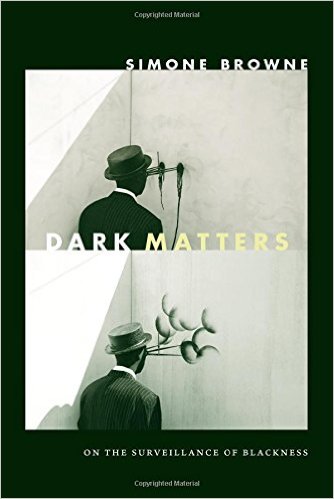This essay has been peer-reviewed by “The New Extremism” special issue editors (Adrienne Massanari and David Golumbia), and the b2o: An Online Journal editorial board.
There are reduced expectations for the younger generation, and this is the first time this has happened in American history. Even if there are aspects of Trump that are retro and that seem to be going back to the past, I think a lot of people want to go back to a past that was futuristic—The Jetsons, Star Trek. They’re dated but futuristic.
—Peter Thiel, quoted in Dowd (2017)
In the scramble to explain Donald Trump’s victory in the 2016 presidential election, then-campaign chief executive Stephen K. Bannon’s claim to a Mother Jones reporter that Breitbart under his editorship was a “platform for the alt-right” (Posner 2016) generated widespread attention in mainstream media publications.[1] A rash of alt-right “explainers” appeared that attempted to familiarize the uninitiated with this so-called movement by outlining the obscure intellectual roots of the alt-right’s seemingly inscrutable meme-driven cultural politics. This paper begins from the premise that the alt-right is not a movement but a reactionary ideology, a “bursting forth of anti-PC cultural politics,” better understood as an ideological “milieu” rather than a movement (Nagle 2017, 19 & 18). Through an analysis of alt-right meme practice and neoreactionary theory, I will show in what follows that the intellectual innovation of the alt-right and its neoreactionary co-travelers is to attach white identity politics to a critique of modernity that turns postcolonialism on its head. Where the latter attacks racism for compromising the democratic promise, the former attacks democracy for compromising the white race’s promise, which is to accelerate capitalism to the lost Hobbesian future of the CEO-King, a vision implied in Peter Thiel’s words quoted in the epigraph to this article. Neoreactionaries have resurrected nineteenth-century notions of racial degenerationism and race as civilizational index, sutured them to techno-futurism, and deployed this monstrous racist hybrid in the form of what look on the surface like left and postcolonial critiques of modernity. The components of this thinking are familiar, but this precise combination is novel. The intellectual and aesthetic practice of the alt-right can thus be described as uncanny: strange but entirely familiar, a return in the present of a repressed past. In short, the alt-right’s newness is a symptom of its oldness.
This argument draws on Corey Robin’s (2013) analysis of two key features of reactionary ideology, which, Robin argues, seeks to restore a lost past to a fallen present, and does so precisely by attacking the present on its own terms. This reactionary war against contemporary culture therefore tends to assume the aesthetic form of this culture—an immanent critique from the right that attacks the present culture to restore a past it has lost. Adopting Robin’s framework, I examine the attack on the present in the form of alt-right meme culture and the neoreactionary proposal for restoring a lost past.
Neoreactionaries have a name for the structure of the fallen present: the “Cathedral,” the term Curtis Yarvin (writing as the blogger Mencius Moldbug) coined to describe the academics and mainstream journalists who preach the official “faith” of political correctness (2008a). The notion bears resemblance to the “propaganda model” (Herman and Chomsky 1988) of mass media, but instead of mainstream media and academia colluding with capital, they are preventing its flourishing. In its broad contours if not in its politics, this “Cathedral” critique resonates with left critiques of identity politics and diversity discourse, both of which are central to what Jodi Dean calls “communicative capitalism,” or the form of capitalism that captures resistance by materializing practices of agency, participation, and diversity in communication technologies (Dean 2002, 2009). Left academics therefore find themselves united with corporate capital around “enthusiasm for diversity, multiplicity, and the agency of consumers” (Dean 2009, 9), a state of affairs that has led many on the left to call for a rejection of identity politics. Hence Nagle, in her important if controversial work on the emerging reactionary ideologies, argues that the alt-right opposes “the new identity politics” of liberal online spaces like the social blogging network Tumblr that normalize “anti-male, anti-white, anti-straight, anti-cis rhetoric” on the “cultural left” (Nagle 2017, 68).
I want to suggest here, though, that whatever the merits of identity politics as a scholarly approach or political strategy might be, the alt-right critique of identity politics is only the first reactionary gesture—the immanent critique of the present. The second move—the restoration of the lost past—does far more than violate the terms of diversity discourse; it seeks to install race as an interface that gathers humans in a global frame and sorts them hierarchically. Mobilizing memes as the aesthetic form of reaction, the alt-right popularizes this racial interface. Richard Spencer’s slogan—“race is real, race matters, race is the foundation of identity” (Caldwell 2016)—seeks to formalize racism as a political strategy, appropriating diversity discourse to claim white nationalism as a protected identity formation. Racist exclusion is the fulcrum of the proposed political order.
The uncanny is a useful figure for analyzing the reactionary attempt to restore a lost past. This formal racism is uncanny in the strict sense Freud (1919) defines the term: the appearance of “something long familiar” that was estranged “only through being repressed” (148). The appearance of this estranged object motivates ideological attempts to “integrate the uncanny” and “assign it a place” in a fallen present (Dolar 1991, 19). By focusing on the alt-right’s immanent critique of identity politics, we allow the alt-right to direct us to the “place” in the fallen present that needs critiquing, all the while missing the lost past that the alt-right seeks to restore. As a figure of encounter with the present, the uncanny directs us to the formal practice of assigning a place.
I begin with the first reactionary gesture—immanent critique—by examining the meme as a formal manifestation of what Dean calls communicative capitalism, and therefore as an entirely familiar form, even if the content of alt-right memes is bizarre. I then turn to the second reactionary gesture—the restoration of the lost past—by turning to the intellectual roots of the alt-right, focusing on Bannon’s summer of 2014 speech at a Vatican conference and its resonance with the neoreactionary thinkers Mencius Moldbug and Nick Land, whose form of uncanny racism I will describe. The connection extends beyond shared sympathy: Yarvin’s start-up counts the Trump-supporting Thiel as an investor (Pein 2014), and Yarvin reportedly communicated through an intermediary with Bannon while the latter was still Trump’s Chief of Staff (Johnson and Stokols 2017). I conclude by suggesting how attention to ideological form makes it possible to critique reactionary ideology without replicating the first reactionary gesture and arriving at the same place of critique that reactionary ideology selects, a danger that haunts any attempt to contextualize reaction.
First, a brief note on terminology: the alt-right is a contested term, but is best understood as a shorthand for anti-politically correct reactionary ideology that developed its meme aesthetic in message boards, particularly 4chan (see Nagle 2017, 12 & 19). Neoreactionary thinking is a specific intellectual tradition that influences many alt-right adherents. This paper does not seek to define the alt-right, and indeed such definitional questions tend to impose a misreading of the alt-right as a coherent movement rather than a reactionary ideology. Nor does this paper deny the existence of extreme right organization (Berlet and Lyons 2000; Berlet 2004); rather, it seeks to analyze the “metapolitics” (Lyons 2017) of an ideological “fascist creep” (Ross 2017).
Memes and the Allegorical Interface
After Trump’s 2016 victory, alt-right partisans began claiming the election as a turning point in a meme war that most mainstream audiences nevertheless knew little about until mainstream journalists began publishing “explainers” on the subject. A journalistic genre of recent vintage, the “explainer” responds to the perpetual news and commentary stream by expanding the nut graph into a contextual framework for understanding complex or obscure issues, stories or trends, allowing those who find themselves “out of the loop” to “grasp the whole” of the story (Rosen 2008). The alt-right, with its cornucopia of obscure memes and references—from the mystical “meme magic” of the pseudo-religious Cult of Kek (more on this below) to the infamous Pepe the Frog to racist approximation of African American Vernacular English of “dindu nuffin”—would seem to demand the explainer treatment, particularly for those who discovered the alt-right only after Trump’s hiring of Bannon brought the alt-right to mainstream attention. As I show below, mainstream explainers tend to attempt to uncover the ostensibly obscure symbolism of alt-right memes.
Before turning to the explainers, though, it is necessary to attend to the meme and its function in reactionary ideology. The critical impulse is to reveal that which ideology conceals, but the alt-right does not conceal its racism; there is no cover (Topinka 2018). Instead, there is an attempt to repurpose the form of communicative capitalism to critique the present. As a form, the meme is ideally suited to such a task. The meme form encourages inclusion, participation, and bricolage—all the tools once associated with emancipatory politics and now absorbed into communicative capitalism. In this sense, the meme offers a perfect reactionary tool: reappropriative in its form, it reacts against the present by repurposing it.
Indeed, the meme is a privileged form of communicative capitalism; it is an allegory of exchange, where culture exits only to be repurposed, and where the symbolic submits to circulation. Although their content may appear obscure, the form of alt-right memes is entirely familiar; in this sense, they are uncanny allegories of communicative capitalism. Building on and contesting the media formalism of Lev Manovich and the hard media determinism of Friedrich Kittler, Alexander Galloway’s (2012) recent work on control allegories argues that media cannot be reduced to their technical predicates—storing, transmitting, and processing—or understood as “objects” bearing a set of formal characteristics that afford certain determinant effects. Galloway (2012) proposes the notion of the “interface” to examine media as forms that inaugurate sets of practices. Mediation is therefore a “process-object” (46), a space of flow, transformation, and transition where the “inside” of technical media encounters the “outside” of the social world. This encounter between technical media and social technique is, for Galloway, an allegory of how contemporary power works: technical apparatuses tend to encourage sets of practices that produce a flexible, modular, and endlessly transformable form of power.
A technical apparatus might encourage a reactionary response as well. Consider Urbit, the “personal sever” created by Curtis Yarvin, also known as Moldbug, the neoreactionary blogger. The Urbit interface inserts an “opaque layer” between the user and the combination of cloud services users rely on (Wolfe-Pauly 2017). Rather than outsourcing computing to cloud services, Urbit offers general purpose personal server that “holds your data; runs your apps; wrangles your connected devices; and defines your secure identity” (Wolfe-Pauley 2017). Urbit seeks to reclaim the sovereignty that Benjamin Bratton (2016) argues has been vested in “the Stack” of computing and cloud services (particularly Facebook, Google, and Amazon) that now comprise planetary-scale computation. As creators Galen Wolfe-Pauly and Yarvin suggest, Urbit restores digital independence and reclaims sovereignty by returning to users exclusive control over their data. Instead of more participatory culture—“toiling on Mark Zuckerberg’s content farm” (Yarvin, quoted in Lecher 2017)—Urbit offers what neoreactionaries call “exit.” It is software as an allegory for the neoreactionary age.
The meme form relies on participation from users competent in digital remixing. To meme is to participate through reappropriation. Scholars have tended to read this participatory reappropriation as democratizing and politically liberating (Coleman 2014)—even, at times, when meme practice becomes explicitly racist (Phillips 2015, 97).[2] Yet moving too quickly from technique to politics risks misunderstanding both. Amidst the recent attention in mainstream culture given to memes forged on the website 4chan’s message boards, it is also tempting to claim that “4chan invented the meme as we use it today” (Beran 2017). However, the meme form emerges from message board formats rather than any particular community. Börzsei (2013) thus traces the meme’s genealogy to Usenet, where meme use signals familiarity with message board discourse and offers a means of performing digital competence. Memes emerge from a constellation of interfaces—photo editors, image hosting sites, meme generators for image macro memes, and message boards—that encourage exchange, appropriation, and repurposing. As such, the meme is an allegory for communicative capitalism, which does not capture each instance of resistance through cultural reappropriation so much as engulf resistance in its very form.
Memes function through deixis: they signal location in a culture, relying on in-group agreement for understanding. The meme operates through the digital media aesthetics of the “stream” (Lovink 2016), where the signaling of links in circulatory networks replaces symbolic representation. This accounts for the uncanny familiarity of alt-right memes, since their obscurity requires laborious explanation to “understand;” that is, of course, unless one already knows the references. But the obscurity to outsiders is a basic function of the meme form itself. Consider the “Most Interesting Man in the World” meme, an example of the image macro, which in turn provides the basic grammar for the meme: an image, typically drawn from popular culture, is overlaid with text, which itself typically references popular culture or tropes from internet culture (the image might be also be drawn from a viral video, but, as Shiffman (2011) argues, something that “goes viral” does not become a meme unless it becomes the subject of imitation and transformation).

This meme imitates the performed cultural sophistication of the “most interesting man” but transforms it to apply to internet culture, where no geek would be caught using Internet Explorer. Even such a banal meme as this requires some familiarity with a range of cultural discourses and figures: the “Silver Fox,” the Latin lover, and geek culture. This meme is as strange as any alt-right meme, and equally void of symbolism. It is a tethering of cultural domains, the formal manifestation of the reappropriation that dominates internet culture and communicative capitalism. By ignoring the meme form, the explainers approach the alt-right as inscrutable, when in fact the alt-right practices a vernacular aesthetic form. To be sure, alt-right memes rely on a relatively esoteric referential repertoire, but the form in which this repertoire appears—the meme, an allegorical form of communicative capitalism—is entirely familiar.
The Alt-Right Explainer
Capitalizing on Breitbart’s connection to Trump through Bannon, Allum Bokhari and Milo Yiannopolous (2016) published “An Establishment Conservative’s Guide to the Alt-Right” on Breitbart, an article that helped establish the generic conventions for the alt-right explainer: ride the momentum of the tenuous links between the alt-right and Donald Trump, identify the intellectual base (including neoreactionaries, especially Moldbug), point up the contrast with two of the main wings of mainstream American conservatism (anti-globalization, anti-theocracy), and demystify “meme magic” by explaining what memes—especially Pepe the Frog—mean. Similar explainers soon echoed in the nave of the “Cathedral.” The Daily Wire, the Weekly Standard, the National Review, Vox, and The New York Times published explainers following Breitbart’s pattern, as did the neo-Nazi Daily Stormer. Citing the left’s purported culture war victory, the Weekly Standard claims that the alt-right’s racism is merely a rhetorical response to the “left’s moralism” (Welton 2015), and the New York Times explainer (an op-ed by Christopher Caldwell, a senior editor at the Weekly Standard) emphasizes that alt-right racism is partly a result of the undue expansion of what it means to be “racist” (Caldwell 2016), an expansion Caldwell redresses by carefully distinguishing malignant white supremacists from the purportedly more benign white nationalists. In the face of such prevarication, the Daily Stormer’s “Normies’ guide to the alt-right” makes for bracing reading (Anglin 2016). Although it follows the generic conventions Breitbart established, it rejects the latter as a latecomer, claims racism as the fundamental fulcrum of alt-right ideology, and calls racist trolling a form of “culture-jamming” directed against so-called “normie” culture (Anglin 2016). The Daily Stormer, unfortunately, sees things more clearly than the “Cathedral” on this score. This racist trolling takes form in the meme, which becomes a mechanism of ideological assault and community-building.
Hillary Clinton’s campaign famously responded to one such meme—shared most prominently by Donald Trump, Jr. and Roger Stone—that featured a photoshopped film poster for The Expendables, retitled as “The Deplorables,” with the original actors’ heads replaced with a number of prominent Trump supporters during the 2016 presidential campaign: Roger Stone, Ben Carson, Chris Christie, Eric Trump, Mike Pence, Rudy Giuliani, Donald Trump, Jr., Alex Jones, and Milo Yiannopolous. Trump is the central figure in the image. Hovering over his left soldier, Pepe the Frog looks smugly on, his red-blond hair coiffed in Trump’s signature style (Chan 2016). The photoshopping is clumsy, and the film referenced is archetypical Hollywood mediocrity, but to explain this meme is to marvel at the range of discourses it summons: from the visual and textual pun on The Expendables—which is in turn a play on Clinton’s dismissal of Trump supporters as belonging in the “basket of deplorables”—to the visual enrollment in Trump’s campaign of Pepe the Frog himself, whose bizarre internet career has by now been thoroughly chronicled.[3] The meme sutures a complex intertextual tissue, with each reference signaled on the aesthetic surface of the meme.
The explainer genre encourages a “hermeneutics of suspicion” (Ricoeur 1970) that seeks to wrest some underlying meaning from the meme. The Clinton campaign formalizes its explainer of this meme as a question-and-answer session between the innocent and the knowing: “Who is that frog standing directly behind Trump? / That’s Pepe. He’s a symbol associated with white supremacy. / Wait. Really? White supremacy?” (Chan 2016). The dialogue falls into the trap of attempting to demystify Pepe. The Clinton campaign approaches the meme with a surface-depth aesthetic model, asking what the meme symbolizes, and this representational reading misrecognizes the meme form. As a result, the explainers fail to reckon with the uncanny familiarity of these ostensibly obscure aesthetic forms. As is often the case in critical theory, the explainer positions the audience as the innocent questioner in the Clinton campaign’s explainer—What? Really? A white supremacist frog? The alt-right is truly esoteric! Hence the headline of the New York Times explainer: “What the Alt-Right Really Means” (Caldwell 2016). Or the Vox headline for its explainer: “The Alt-Right Is Way More Than Warmed-Over White Supremacy. It’s That, but Way Way Weirder” (Matthews 2016). Or from the Huffington Post: “My Journey to the Center of the Alt-right” (O’Brien 2016). These headlines suggest that the alt-right’s racist ideology is obscure (even though it has always been a feature of American politics) and that its aesthetic practices are inscrutable (even though the meme is a primary aesthetic form of participatory media). Thus the Weekly Standard blames the alt-right on the “left’s moralism” and the New York Times diagnoses the undue expansion of the meaning of “racist” as the cause of the alt-right’s reactionary politics. By failing to reckon with aesthetics of the meme form, these “explainers” unwittingly redeem “meme magic” and its racist politics as something obscure and inscrutable rather than familiar and intractable.
As an allegorical form of communicative capitalism and the aesthetics of the “stream” (Lovink 2016), the meme operates by signaling links—including to racist subcultural formations—rather than by encoding symbolic representation. Updating for the digital age Richard Dawkins’s 1972 notion of memes as the genetic expression, selection, and variation of cultural units, Limor Shifman (2012) offers a rigorous definition of memes as “building blocks” of complex cultures that propagate quickly, reproducing through imitation and transformation (189). A form of Henry Jenkins’s “spreadable media” (Jenkins et al 2013), memes exist in circulation, transforming through “remixes” (Wiggins and Bowers 2015) that blend cultural domains and generate the meme’s circulatory momentum. This remixing and repurposing wrenches objects from their cultural domain, creating a new, thickly referential memetic context. The meme is thus a form that transforms in circulation. To “get” the meme, one has to recognize both the cultural domain the meme references and how the meme is dislocating that cultural domain. Although memes are thickly referential, with dizzyingly complex circulatory histories, they are not typically rich hermeneutic texts. They signal and enact cultural convergence, but they do not symbolize it. Hence the awkwardness of the “hermeneutics of suspicion” the Clinton campaign brings to Pepe. Those who use Pepe in white supremacist memes do not smuggle him in as a covert symbol. His appearance signals a trajectory of transformation in circulation, not a symbolic repertoire. The Clinton campaign is thus right to associate Pepe with white supremacy but wrong about the meme, which signals circulation without symbolizing.
By “unmasking” political correctness as the true cause of racism, mainstream explainers follow the first reactionary gesture, repeating the contours of the reactionary immanent critique. In a widely shared Medium post, Dale Beran claims that Pepe, the “grotesque, frowning, sleepy eyed, out of shape, swamp dweller, peeing with his pants pulled down because-it-feels-good-man frog” represents in an ideology that “steers into the skid of its own patheticness. Pepe symbolizes embracing your loserdom, owning it” (Beran 2017). This attempt at a hermeneutics of Pepe ignores that the alt-right does not make memes out of the “feels good man” Pepe; the alt-right Pepe wears a smug smile, openly declaring his troll status. Such a pathos-laden reading of “steering into the skid” shares with Laurie Penny’s (2017) reading of Yiannopolous’s followers as duped “Lost Boys” a tendency to position the “loser” status of the geek (the archetypal perpetual virgin housed in his parents’ basement) as an alibi for misogyny and white nationalism. Indeed, Beran claims the left’s “radical idea of sexual-difference-as-illusion,” which is “meant to solve the deplorables’ problem” by “dispelling it as a cloud of pure ideas” is in fact an “Orwellian” declaration to “these powerless men” that “‘There’s no such thing as your problem!’” (Beran 2017). Beran’s critique here echoes Nagle’s criticism of the “anti-male, anti-white, anti-straight, anti-cis rhetoric” on the “cultural left” (Nagle 2017, 68). It is certainly possible to criticize such rhetoric, and reflexivity is surely a crucial political practice. But it is also notable that these critiques replicate the reactionary gesture: the left has won the culture war, diversity is ascendant, and the straight cisgender white male has lost his position—political correctness is everywhere run amok. The left therefore becomes the cause of the alt-right, and alt-right’s reactionary thinking becomes justified, if misguided. Indeed, these “Lost Boys,” dispossessed by the regime of political correctness, have also lost agency, and their hateful meme magic is a mere symptom of this fall. The critical impulse is to unmask the discourse by assigning it a context, but this is precisely its weakness in its approach to reactionary ideology. The alt-right’s blatantly racist discourse offers little to unmask. Its esoteric memes turn out to be banal cultural references. Unmasking its discourse tend to replicate the first reactionary gesture by arriving at the same place—the same cultural context—to be targeted for immanent critique.
Reactionary Critical Theory
I turn now to the second reactionary gesture—the restoration of the lost past. Alt-right and neoreactionary racism is uncanny—old and out of place, yet entirely familiar. Attending to the uncanny as a figure of ideology—an attempt to assign a place to that which is out of place—allows an approach to reactionary ideology that does not replicate the gesture of its immanent critique.
Neoreactionary ideology tends to adopt the form and style of critical theory. Of course, neoreactionary thinker Nick Land was once a celebrated academic critical theorist, particularly in the UK, where he became something of a cult figure for his “dark Deleuzian” capitalist accelerationism and experimental theory-fiction, which he developed as part of the Cybernetic Culture Research Unit at the University of Warwick in the 1990s.[4] The infamous reactionary blogger Mencius Moldbug also offers a critical genealogy of modernity on his Unqualified Reservations blog, particularly in the fourteen-part “Open Letter to Open-Minded Progressives” (2000a-d &c). Land’s “Dark Enlightenment” text attempts to formalize Moldbug’s prolific if rambling blogposts into a neoreactionary theory of capitalist acceleration grounded in a despotic sovereign political order. Moldbug and Land follow the form of a left and postcolonial critique of modernity, but turn the critique on its head: the modern promise of equality and democracy was not compromised (by slavery, colonialism, and capitalism); the promise is itself the compromise that prevents capitalism’s flourishing. Modern notions of equality legitimate any grievance as oppression, and democracy compels the state to recompense any grievance claim. Democracy and equality therefore combine to promote personal failure. Neoreaction seeks to replace democratic voice with exit, or the right to leave any polity at any time, and to restore sovereignty in the figure of a CEO-King who seeks only to maximize value and therefore to accelerate capitalism. Race serves a crucial function in this theory: ministered to by the “Cathedral,” race mediates between citizens and state, sanctioning grievance claims and incentivizing dysfunction. However, by properly reprogramming race through neo-eugenics rather than modern notions of equality, it could become the accelerationist motor capable of restoring the lost future of capitalist sovereignty before its corruption through enforced diversity.
The obsession with restoring lost ethnic sovereignty links the more abstruse neoreactionary thinkers with populists such as Bannon, who also adopt the form of left critique to advance reactionary thinking. Although Bannon’s status as a political star did not long outlive his tenure in Trump’s White House, which ended on August 18, 2017, he remains a pivotal figure for his role in linking the openly fascist politics of figures like Aleksander Dugin and Julius Evola with mainstream political discourse. In his 2014 speech to a conference in the Vatican, Bannon channels left critical theory, citing Marx in a critique of the “Objectivist School of libertarian capitalism,” which seeks to “make people commodities, to objectify people” (Bannon, quoted in Feder 2016). Identifying a “crisis in the underpinnings of capitalism,” he diagnoses the post-crash bailout as symptomatic of a system that favors elites over the working classes (Bannon, quoted in Feder 2016). As a reactionary, though, Bannon proposes to rescue the future by restoring the past. Bannon praises Vladimir Putin, and his “advisor [Aleksander Dugin] who harkens back to Julius Evola” for “standing up for traditional institutions” and national sovereignty (Bannon, quoted in Feder 2016). Acknowledging Evola’s fascism, Bannon nevertheless argues that “people want to see sovereignty for their country, they want to see nationalism” and a return to the time of America’s founding when “freedoms were controlled at a local level” rather than by elites in global command centers such as New York, London, and Berlin (Bannon, quoted in Feder 2016). Bannon’s thinking here precisely follows the reactionary paradigm Robin outlines: Bannon develops a withering critique of the present order—one that overlaps in places with left critiques of finance capital—and offers as a solution the restoration of a fallen order.[5] Although they distance themselves from populist fascists like Bannon, Land and Moldbug share the same reactionary preoccupation. Land’s systematization of Moldbug sketches a program for fulfilling Bannon’s desire for sovereignty. This program relies on race as a formal explanatory category—a mode of immanent critique—and an interface that ran reconfigure the political order, assigning a place for the lost future of the CEO-King.
The Cathedral and History
As I have argued, following Robin (2013), reactionary politics combines two gestures: first, an immanent critique of the present, and second, a call to restore a lost past. This impulse surfaces in racist meme culture, but it receives a more rigorous treatment in Land and Moldbug, both of whom wage a critique of the present in service of a resurrection of the past. I turn now to the neoreactionary “Cathedral” critique—the first reactionary gesture—in order to show how it sanctions a call for a return in the present to neo-Victorian racism—the second reactionary gesture.
Land and Moldbug are profoundly lapsarian thinkers. For them, progressivism—the conspiracy the “Cathedral” sustains—is the fall that obscures and indeed encourages the degeneration of the races. Land (2013) argues that the progressive Enlightenment follows the “logical perversity” of “Hegel’s dialectic,” enforcing the “egalitarian moral ideal” through progressivism’s sustaining formula: “tolerance is tolerable” and “intolerance is intolerable.” This formal structure guarantees a “positive right to be tolerated, defined ever more expansively as substantial entitlement” (Land 2013). If progressivism is the fall, tolerance is the juggernaut that tramples any attempt at ascent. For Land, the American Civil War is a moment of original sin that that “cross-coded the practical question of the Leviathan with (black/white) racial dialectics” (Land 2013). Of the Civil War, Land writes:
The moral coherence of the Union cause required that the founders were reconceived as politically illegitimate white patriarchal slave-owners, and American history combusted in progressive education and the culture wars. If independence is the ideology of the slave-holders, emancipation requires the programmatic destruction of independence. Within a cross-coded history, the realization of freedom is indistinguishable from its abolition. (Land 2013)
The Civil War thus installs a “cross-coded” history running on parallel historical tracks between progressive and dark enlightenments, emancipation and independence, voice and exit. This genealogy allows Land to identify a formal mechanism that propels the “only tolerance is tolerable” formula of the Progressive Enlightenment. The anachronistic insertion of “progressive education” and the “culture wars” into the stakes of the Civil War does not trouble Land because his analysis is formal rather than historical: the “cross-coded” history leads inexorably to progressivism, which in turn functions as a transhistorical epistemological and ontological force. Hence Moldbug claims, bizarrely, that Harvard’s “progressive” curriculum has not changed in 200 years, that British politics has been moving steadily left for 150 years, and that progressives—among whom he includes all mainstream Western politicians—have no enemies to the left (Moldbug 2008a).
The “Cathedral” conspiracy therefore assigns a context for reaction. If neoreactionary thinking appears to be out of place, it is only because of the long reign of progressive dogma. The reactionary desire for a lost past follows close behind. Moldbug thus routinely cites the pre-1922 texts available on Google Books to pierce the “Cathedral” veil, approvingly linking, for example, to Nehemiah Adams’ 1854 account of his trip to the south, where he found himself surprised to find the slaves “were all in good humor, and some of them in a broad laugh” and charmed by the “unbought” friendliness of slaves (Adams 1854). Elaborating on the dubious claim that the “neat thing about primary sources is that often, it only takes one to prove your point,” Moldbug brags that high school students “won’t be assigned the primary sources I just linked to” (Moldbug 2008d). He cites the same source in a post defending and indeed advocating Thomas Carlyle’s view on slavery, suggesting that those who view slavery as “intrinsically evil” would “quickly change their tunes if forced,” like Adams, “to function in an actual slave society” (Moldbug 2009). The “Cathedral” conspiracy excuses Moldbug from evaluating Adams’ account, or from consulting the numerous contemporary accounts of slavery’s evils. If high school students wouldn’t be assigned it, that’s only because it violates “Cathedral” dogma. And since Adams’ account predates the Civil War (though not Enlightenment itself), it is therefore more likely to see the truth before the fall. Piercing the mists of this transhistorical progressivism, we see that “Not all humans are born the same, of course, and the innate character and intelligence of some is more suited to mastery than slavery. For others, it is more suited to slavery” (Moldbug 2009). To take the measure of these aptitudes, Moldbug turns to an uncanny form of racism that functions as an interface for gathering and sorting human populations.
Race as Interface
Land and Moldbug accept race as a means of categorizing human aptitude within a global hierarchy. This notion of race plays a crucial role in their thinking, which describes the following racial dynamic: Insofar as progressivism incentivizes inaptitude, it also encourages racial degeneration. This is race as a technology, as Wendy Chun (2009) has described: race has particular affordances for enframing human populations, and this enframing shapes the contours of social and political orders. Extending Galloway, this is race as interface, as a form that gathers humans into a global frame and sorts them hierarchically (see also Weheliye 2014).
Land and Moldbug’s uncanny racism resurrects a notion of race as an interface for gathering and sorting global populations first deployed in late Victorian eugenics. Like the eugenicists, Land and Moldbug rely on race as a mean of categorizing humans based on their biologically determined aptitude. In 1869, Francis Galton called this aptitude “hereditary genius,” and offered it as a scientific explanation for the advance of certain civilizations over others, with Europeans, of course, at the apex of racial hierarchy (Galton 1869). Land and Moldbug adopt a range of figures (although no trained geneticists) in articulating a new version of race science called “human biodiversity,” which includes the relatively banal argument that humans are not neurologically uniform coupled with the dubious and insidious claim that this “biodiversity” can be best measured by plotting genetically-determined racial categories to IQ distribution.[6] Yarvin makes this argument without his typical circumlocution in a Medium post (which he later deleted) that attempted to persuade delegates at the LambdaConf functional programming conference against boycotting his presence because of his slavery apologetics (Breitbart sympathetically chronicled Yarvin’s plight).[7] Yarvin insists he does not equate “anatomical traits” with “moral superiority” but makes the explicit argument for a genetically determined racial hierarchy as measured by IQ in the comments section of the Medium post (Yarvin 2016). Here Yarvin is trying to speak to what Moldbug would call the “Cathedral,” defending himself from committing the moral sin of racism as the bad ideology of individual viewpoints. He also criticizes mass incarceration—the first reactionary gesture. Yet Yarvin also summons race in its uncanny neo-eugenicist form to suggest that “Malik cannot be magically turned into a Jewish math nerd” (Yarvin 2016). This is the second gesture, a proposal that neo-eugenicist racism can explain and resolve the problem of mass incarceration and “the destruction of African American society” (Yarvin 2016).
Another crucial connection between neoreaction and Victorian racism is the use of race not only to categorize humans by aptitude, but also to plot the potential for civilizational achievement. John Stuart Mill’s On Liberty offers a canonical description of Victorian Liberal conceptions of the hierarchy of races, which Mill leverages to justify violent repression in India: savages cannot “practise the forebearance” that “civilized society” demands, and they therefore require “despotic” governance to restore sovereignty and subdue passions (209). Land’s claim that Europeans are genetically predisposed to “low time preference” is formally indistinguishable from Mill’s preoccupation with forbearance. However, neoreaction reverses the racial trajectory. For liberal Victorian racial theorists, exposure to Enlightenment civilization could advance a given race beyond savagery. Land’s neoreaction reverses this trajectory: the exposure to Enlightenment formula that “only tolerance is tolerable” encourages further dysfunction in the lower races. This argument adopts another strain of Victorian racism: racial degenerationism, or the notion that races could devolve to be increasingly ill suited to civilization. Racial degenerationism found practical application in criminal atavism, the theory that criminals resembled “prehistoric man” and behaved “in a way that would be appropriate to savage societies” (Ellis 1890, 208). Adopting a similar assumption, Land suggests that “barbarism has been normalized,” in “lethally menacing” cities where “civilization has fundamentally collapsed” (Land 2013). Indulging in racist moral panic about urban decay—another anachronism in this age of urban “revitalization”—Moldbug argues that most American cities would benefit from martial law, and Land (2013) identifies white flight as the “spontaneous impulse of the dark enlightenment”: it is all exit and no voice. Land’s investment in white flight is also a libidinal investment in the fear of violently virile black bodies, which finds its parallel in the alt-right’s obsession with cuckoldry and “cucking” racialized as a white man watching his white wife dominated by a “black bull.” The purposefully excessive “cuck” discourse offers a means of indulging the fear of the black body while at the same time enjoying the act of violating tenets of “Cathedral” faith. The crucial point, though, is that “cuck” discourse not only operates to critique political correctness; it also signals an understanding of race as interface for governance, that which promotes degeneration but also—properly reprogrammed—promises acceleration to a lost future.
Conclusion
Before an antifa (anti-fascist) protestor sucker-punched Richard Spencer in the face in Washington, D.C. on Trump’s inauguration day—a moment that quickly achieved meme status—a bystander asked Spencer if he liked black people. Spencer smirked, shrugged, and said, “Sure” (Burris 2017). Identity politics poses a double trap for approaching the alt-right: Criticize the alt-right for bad identity politics, and they can easily dodge the accusation by parroting mainstream acceptance of diversity discourse, or point to the fact that political correctness is mainstream and therefore part of the power structure that so clearly needs dismantling. Criticize identity politics, and cede to the alt-right the choice of battleground. I have argued here that alt-right critics tend to make just such a concession. By focusing on the first gesture—the immanent critique—we risk missing the form of reactionary ideology, which includes a call for restoring a lost past. Spencer attempts to distill this call into a slogan: “race is real, race matters, race is the foundation of identity.” This slogan adapts Land and Moldbug’s racial formalism, but instead of an exit from grievance democracy, it argues for inclusion within grievance status. Hence Moldbug’s (2007) coy refusal of white nationalism: “I’m not exactly allergic to the stuff,” he writes, but white nationalists only recognize the symptom, missing the cure. The critique of “cucks” and the obsession with “red-pilling” offers a more nakedly libidinal, pop cultural take on the “Cathedral,” but, according to Moldbug, the alt-right fails to recognize that the entitlement state cannot expand to include white nationalist grievance, because to do so would violate “Cathedral” dogma. Bannon’s strong sovereignty more closely approaches the cure, but insofar as nationalism entails protectionism, he fails to follow techno-futurism back to the futuristic past that neoreactionaries desire.
Land proposes as a formal fix “hyper-racism,” his vision for accelerating the “explicitly superior” and already “genetically self-filtering elite” through a system of “assortative mating” that would offer a “class-structured mechanism for population diremption, on a vector toward neo-speciation” (Land 2014). This is eugenics as a program for exit, not only from the progressive Enlightenment but also from the limits of humanity. Despite its contemporary jargon, this hyper-racism is indistinguishable in its form from late Victorian eugenics, which also recommended a program of “assortative mating.” Of course, now eugenics places us on a vector toward neo-speciation; so it’s back to the past, but now it’s futuristic.
The “Cathedral” conspiracy justifies and motivates this recuperation of uncanny racism. Clearly, the “Cathedral” conspiracy shares much in common with rudimentary applications of Gramscian notions of hegemony or Hermann and Chomsky’s (1988) propaganda model. Ideology critique and reactionary critique tend to mirror one another. This is because both attempt to assign the uncanny object to a place, to contextualize it, whether as a justified response to the “Cathedral” or as a misguided response to left moralism. Reactionary thinking tends to fully indulge the critical impulse. Behind every veil, it finds the “Cathedral.” This libidinal investment in unveiling resonates in the alt-right obsession with “red-pilling” and cuckoldry. Just as neoreactionaries fear that the “Cathedral” faith promotes black dysfunction, the alt-right fears “blue-pilling” as a form of penetration by the Other.
To those of us reared in the “Cathedral’s” halls, this is all repugnant. It is also uncanny: Haven’t we moved beyond this racism? Of course, the alt-right has a memetic response to this critique: “I mean, come on people, it’s [current year].” The alt-right has fully anticipated critical unmasking and absorbed it into the meme form, which refuses symbolic decoding and provides a formal interface for the participatory reappropriation and bricolage that characterize media practice in this age of communicative capitalism. Ideology critique and reactionary critique are similar in form: both attempt to recuperate the uncanny, to assign it a place. It is therefore crucial to attend to the uncanny form of reactionary ideology, which develops an immanent critique of the present in order to find a place in which to restore a lost past. Rather than following the alt-right to the purported excesses of identity politics, it is crucial to reckon with reactionary racism as the fulcrum of a proposed political order. This is not just a call to examine “structural racism,” because neoreactionary racism and alt-right racism have yet to harden into structure. It is instead a form, an interface between certain technical predicates (race as a gathering and sorting mechanism) and the social (the lost white future of the CEO-King). Reactionary ideology attempts to recuperate this uncanny racism; ideology critique must do more than cite the desire for this recuperation.
_____
Robert Topinka is Lecturer in Transnational Media and Cultural Studies at Birkbeck, University of London. He is currently working on the Arts and Humanities Research Council funded project entitled “Politics, Ideology, and Rhetoric in the 21st Century: The Case of the Alt-Right.”
_____
[1] This work was supported by an Arts and Humanities Research Council grant for “Political Ideology, Rhetoric and Aesthetics in the Twenty-First Century: The Case of the ‘Alt-Right,’” (AH/R001197/1).
[2] As Nagle (2017) documents, Gabriella Coleman (2014) continued to write approvingly of 4chan as late as 2014, when the forum was dominated by extreme racism and misogyny, and she also celebrated the hacker “weev” despite his open Nazism (102-105). In her book on trolling, Whitney Phillips (2015) argues for the redeeming qualities of “racist statements forwarded by people whose stated goal is to be as racist and upsetting as possible” because, unlike more subtle racists, “at least trolls advertise” (97). Although Phillips is right to argue that there is no value in simply condemning trolls, it is similarly difficult to see the value in well-advertised racism. The history of celebratory studies of participatory culture weighs heavily on such accounts.
[3] The explainers cited in this paper all recount a version of Pepe’s history. For an academic treatment, see Marwick and Lewis (2017: 36).
[4] On “Dark Deleuze,” see Culp (2016). For a succinct account and critique of Land’s accelerationism see Noys (2014: 54-58). For more on the controversy surrounding Nick Land’s planned 2016 appearance at the London art gallery LD50 and the seminar series he offered in 2017 at the New Centre for Research and Practice, see Shutdown LD50 (2017) and “Against Nick Land and the Reactive Left” (2017).
[5] This contradictory impulse to restore the past in the future is a key feature of fascism. In an analysis of National Socialism, Jeffrey Herf (1981) calls this “reactionary modernism.”
[6] On HBD, Land and Moldbug’s sources include prolific eugenicist bloggers such as “hbd chick” and Steve Sailer, controversial popular genetics writers including Charles Murray and Nicholas Wade, and the physicist Stephen Hsu, whose recent interest in the genetics of intelligence has generated controversy (see Flaherty 2013). Galton, Land, and Moldbug share a similar strategy of racial typing. Galton adopted Quetelet’s use of the Gauss-Laplace distribution to identify physical generations in human populations, which Galton sought to index with racial categories (Galton 1869: xi, and Wozniak 1999).
[7] Breitbart lists four articles under the “Curtis Yarvin” tag as of May 3, 2019. For the first defense of Yarvin’s presence at LambdaConf, which, incidentally, was published the same day as Breitbart’s alt-right explainer, see Bokhari (2016).
_____
Works Cited
- Adams, Nehemia. 1854. A Southside View of Slavery, or, Three Months at the South in 1854. Boston: T.R. Marvin and B.B. Mussey & Co.
- “Against Nick Land and the Reactive Left.” 2017. e-flux conversations (Apr 2).
- Anglin, Andrew. 2016. “A Normie’s Guide to the Alt-Right.” Daily Stormer (Aug 31).
- Beran, Dylan. 2017. “4chan: The Skeleton Key to the Rise of Donald Trump.” Medium (Feb 14).
- Berlet, Chip. 2004. “Mapping the Political Right: Gender and Race Oppression in Right-Wing Movements.” In Abby Ferber, ed, Home-Grown Hate: Gender and Organized Racism. New York: Routledge.
- Berlet, Chip and Matthew N. Lyons. 2000. Right-Wing Populism in America: Too Close for Comfort. New York: Guilford Press.
- Bokhari, Allum and Milo Yiannopolous. 2016. “An Establishment Conservative’s Guide to the Alt-Right.” Breitbart (Mar 29).
- Bokhari, Allum. 2016. “Programming Conference Rejects SJW Demands to Ban Speaker over Political Views.” Breitbart (Mar 29).
- Börzsei, Linda K. 2013. “Makes a Meme Instead: A Concise History of Internet Memes.” New Media Studies Magazine 7 (Mar).
- Bratton, Benjamin. 2016. The Stack: On Software and Sovereignty. Cambridge, MA: The MIT Press.
- Burris, Sarah. 2017. “White Nationalist Richard Spencer Punched in the Face Camera While Doing Interview.” Raw Story/YouTube (Jan 20).
- Burton, Tara. 2016. “Apocalypse Whatever: The Making of Racist, Sexist Religion of Nihilism on 4chan.” Real Life Mag (Dec 13).
- Caldwell, Christopher. 2016. “What the Alt-Right Really Means.” The New York Times (Dec 2).
- Chan, Elizabeth. 2016. “Donald Trump, Pepe the Frog, and White Supremacists: An Explainer.” HillaryClinton.com (Sep 13).
- Chun, Wendy Hui Kong. 2009. “Introduction: Race and/as Technology; or How to Do Things with Race.” Camera Obscura 24:1. 7-35.
- Coleman, Gabriella. 2014. Hacker, Hoaxer, Whistleblower, Spy: The Many Faces of Anonymous. London: Verso.
- Culp, Andrew. 2016. Dark Deleuze. Minneapolis: University of Minnesota Press.
- Dean, Jodi. 2002. “Communicative Capitalism: Circulation and the Foreclosure of Politics.” Cultural Politics. 1:1. 51-74.
- Dean, Jodi. 2009. Democracy and Other Neoliberal Fantasies. Durham: Duke University Press.
- Dolar, Mladen. 1991. “‘I Shall Be with You on Your Wedding Night’: Lacan and the Uncanny.” October 58. 5-23.
- Dowd, Maureen. 2017. “Peter Thiel Explains Himself.” The New York Times (Jan 11).
- Ellis, Havelock. 1890. The Criminal. New York: Scribner and Welford.
- Flaherty, Colleen. 2013. “Quest for ‘Genius Babies’?” Inside HigherEd (May 29).
- Freud, Sigmund. 1919 [2003]. “The Uncanny.” In The Uncanny. London: Penguin Books. 123-162.
- Galloway, Alexander. 2012. The Interface Effect. Cambridge, MA: Polity Press.
- Galton, Francis. 1869. Hereditary Genius: An Inquiry Into Its Laws and Consequences. London: Macmillan and Co.
- Herf, Jeffrey. 1981. “Reactionary Modernism: Some Ideological Origins of the Primacy of Politics in the Third Reich.” Theory and Society 10:6. 805-832.
- Herman, Edward S., and Noam Chomsky. 1988. Manufacturing Consent: The Political Economy of Mass Media. New York: Pantheon Books.
- Jenkins, Henry, Sam Ford, and Joshua Green. 2013. Spreadable Media: Creating Value and Meaning in a Networked Culture. New York: NYU Press.
- Johnson, Eliana, and Eli Stokols. 2017. “What Steve Bannon Wants You to Read.” Politico (Feb 7).
- Land, Nick. 2013. The Dark Enlightenment.
- Land, Nick. 2014. “Hyper-Racism.” Outside In (Sep 29).
- Lecher, Colin. 2017. “Alt-Right Darling Mencius Moldbug Wanted to Destroy Democracy. Now He Wants to Sell You Web Services.” Verge (Feb 21).
- Lovink, Geert. 2016. Social Media Abyss. Cambridge: Polity Press.
- Lyons, Matthew. 2017. Ctrl-Alt-Delete: The Origins and Ideology of the Alternative Right. Somerville, MA: Political Research Associates.
- Marwick, Alice and Rebecca Lewis. 2017. “Media Manipulation and Disinformation Online.” Data & Society.
- Matthews, Dylan. 2016. “The Alt-Right Is Way More than Warmed-Over White Supremacy. It’s That, But Way Way Weirder.” Vox (Aug 25).
- Moldbug, Mencius [Curtis Yarvin]. 2007. “Why I Am Not a White Nationalist.” Unqualified Reservations (Nov 22).
- Moldbug, Mencius [Curtis Yarvin]. 2008a. “An Open Letter to Open-Minded Progressives. Chapter 1: A Horizon Made of Canvas.” Unqualified Reservations (Apr 17).
- Moldbug, Mencius [Curtis Yarvin]. 2008b. “An Open Letter to Open-Minded Progressives. Chapter 6: The Lost Theory of Government.” Unqualified Reservations (May 22).
- Moldbug, Mencius [Curtis Yarvin]. 2008c. “An Open Letter to Open-Minded Progressives. Chapter 8: A Reset Is Not a Revolution.” Unqualified Reservations (Jun 5).
- Moldbug, Mencius [Curtis Yarvin]. 2008d. “An Open Letter to Open-Minded Progressives. Chapter 14: Rules for Reactionaries.” Unqualified Reservations (Jul 17).
- Moldbug, Mencius [Curtis Yarvin]. 2009. “Moldbug on Carlyle. Chapter 2: Why Carlyle Matters.” Unqualified Reservations (Jul 16).
- Nagle, Angela. 2017. Kill All Normies: The Online Culture Wars from 4chan to Tumblr to Trump and the Alt-Right. Alresford: Zer0 Books.
- Noys, Benjamin. 2014. Malign Velocities: Accelerationism and Capitalism. Alresford: Zer0 Books.
- O’Brien, Luke. 2016. “My Journey to the Center of the Alt-Right.” Huffington Post (Nov 3).
- Pein, Corey. 2014. “Mouthbreathing Machiavellis Dream of a Silicon Reich.” The Baffler (May 19).
- Robin, Corey. 2013. The Reactionary Mind: Conservatism from Edmund Burke to Sarah Palin. Oxford: Oxford University Press.
- Ross, Alexander Reid. 2017. Against the Fascist Creep. Chico, CA: AK Press.
- Rosen, Jay. 2008. “The National Explainer.” PressThink (Aug 13).
- Penny, Laurie. 2017. “On the Milo Bus with the Lost Boys of America’s New Right.” Pacific Standard (Feb 22).
- Phillips, Whitney. 2015. This Is Why We Can’t Have Nice Things: Mapping the Relationship between Online Trolling and Mainstream Culture. Boston: MIT Press.
- Posner, Sarah. 2016. “How Donald Trump’s New Campaign Chief Created an Online Haven for White Nationalists.” Mother Jones (Aug 22).
- Ricoeur, Paul. 1970. Freud and Philosophy: An Essay on Interpretation. New Haven, CT: Yale University Press.
- Shifman, Limor. 2012. “An Anatomy of a YouTube Meme.” New Media and Society 14:2 (Mar). 187-203.
- Shutdown LD50. 2017. “Racism as Deep Trolling and Other New Centre Diversions.” Mute (Apr 4).
- Topinka, Robert. 2018. “Politically Incorrect Participatory Media: Racist Nationalism on r/ImGoingtoHellforThis.” New Media and Society 20:5 (May). 2050-2069.
- Yarvin, Curtis. 2016. “Why You Should Come to LamdaConf Anyway.” Medium (May 27).
- Weheliye, Alexander G. 2014. Habeas Viscus: Racializing Assemblages, Biopolitics, and Black Feminist Theories of the Human. Durham, NC: Duke University Press.
- Welton, Benjamin. 2015. “What, Exactly, Is the ‘Alternative Right’? A Taxonomy.” Weekly Standard (Dec 21).
- Wiggins, Bradley and G Bret Bowers. 2015. “Memes As Genre: A Structurational Analysis of the Memescape.” New Media and Society 17:11 (Dec). 1886-1906.
- Wolfe-Pauly, Galen. 2017. “Urbit Overview.” Urbit corporate page.
- Wozniak, Robert. 1999. Classics in Psychology, 1855-1914: Historical Essays. Bristol, UK: Thoemmes Press.












